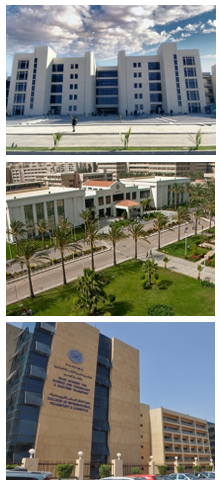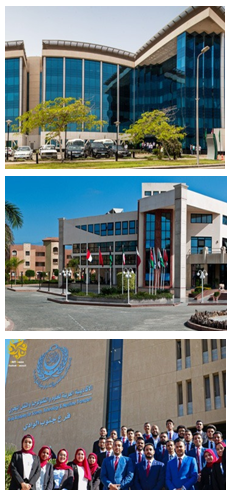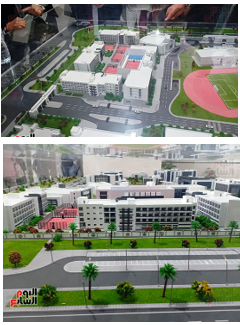
AASTMT prioritizes environmental sustainability by selecting brownfield sites for its campuses, repurposing existing land to preserve natural habitats and reduce environmental impact. This approach supports urban revitalization, transforming underutilized areas into educational hubs that contribute to regional economic and social development. By restoring degraded land, AASTMT aligns with sustainable urban planning principles, enhancing infrastructure and promoting a high quality of life for students.
Environmental Sustainability: Building on brownfield sites aligns with AASTMT's commitment to environmental sustainability. By repurposing existing land instead of developing greenfield sites, AASTMT reduces the need for additional land conversion and preserves natural habitats. This approach helps minimize the environmental impact of campus construction and promotes responsible land use.
Urban Planning and Revitalization: Selecting brownfield sites for campus locations allows AASTMT to contribute to urban revitalization efforts. By transforming underutilized or abandoned areas into educational institutions, AASTMT can help revitalize surrounding neighborhoods and contribute to the economic and social development of the region. This approach aligns with the principles of sustainable urban planning and promotes the efficient use of existing infrastructure and resources.
Restoration Potential: Brownfield sites often have the potential for restoration and remediation. By choosing these sites, AASTMT can contribute to the restoration of degraded land and address environmental challenges associated with brownfield sites.
It is important to note that the specific criteria and processes used by AASTMT to select brownfield sites for its campuses may vary. AASTMT may consider factors such as accessibility, infrastructure availability, community engagement, and regulatory requirements when evaluating potential locations. AASTMT is always interested in preserving the environment through planning and urban construction to achieve the quality of life for students.



The Arab Academy for Science, Technology & Maritime Transport (AASTMT) has selected the locations of its campuses based on building on brownfield sites. AASTMT's decision to choose brownfield sites for its campuses is likely driven by several factors, including environmental sustainability, urban planning, and the potential for restoration and revitalization of these sites.
Environmental Sustainability: Building on brownfield sites aligns with AASTMT's commitment to environmental sustainability. By repurposing existing land instead of developing greenfield sites, AASTMT reduces the need for additional land conversion and preserves natural habitats. This approach helps minimize the environmental impact of campus construction and promotes responsible land use.
Urban Planning and Revitalization: Selecting brownfield sites for campus locations allows AASTMT to contribute to urban revitalization efforts. By transforming underutilized or abandoned areas into educational institutions, AASTMT can help revitalize surrounding neighborhoods and contribute to the economic and social development of the region. This approach aligns with the principles of sustainable urban planning and promotes the efficient use of existing infrastructure and resources.
Restoration Potential: Brownfield sites often have the potential for restoration and remediation. By choosing these sites, AASTMT can contribute to the restoration of degraded land and address environmental challenges associated with brownfield sites.
It is important to note that the specific criteria and processes used by AASTMT to select brownfield sites for its campuses may vary. AASTMT may consider factors such as accessibility, infrastructure availability, community engagement, and regulatory requirements when evaluating potential locations. AASTMT is always interested in preserving the environment through planning and urban construction to achieve a quality of life for students.
Building on Brownfield Sites on AASTMT webpage